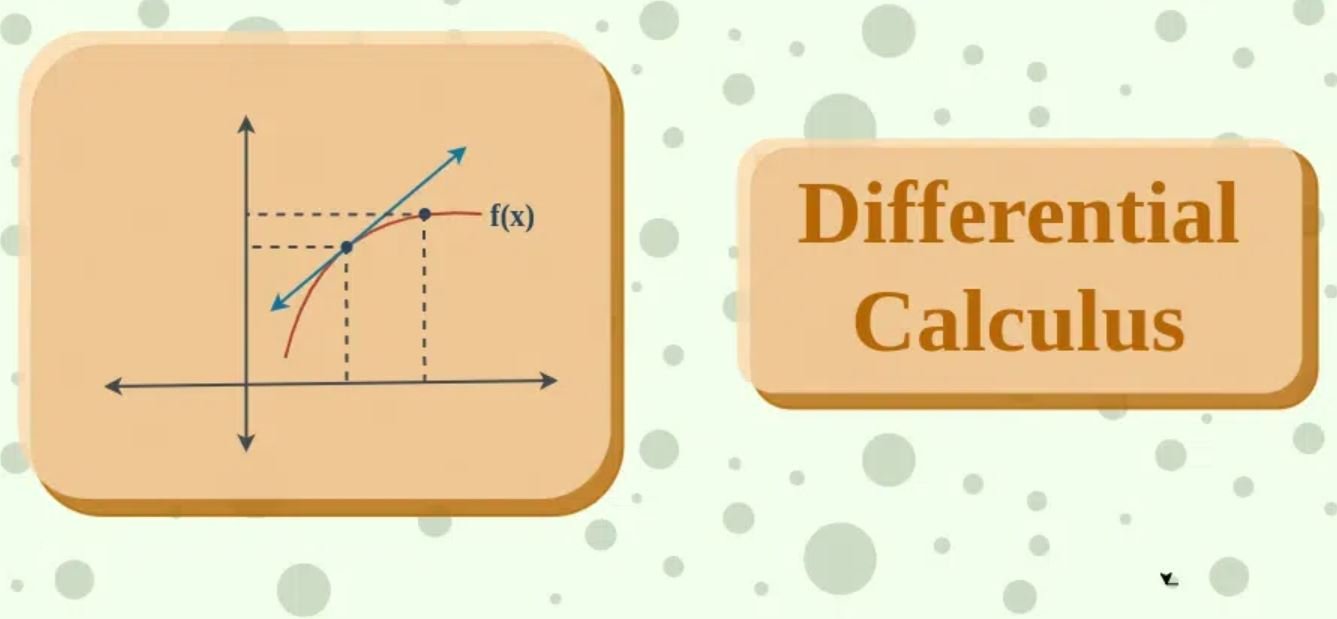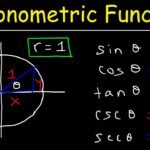Differential calculus is a branch of calculus that deals with the study of rates of change of functions and the behaviour of these functions in response to infinitesimal changes in their independent variables.
Some of the prerequisites for Differential Calculus include:
- Independent and Dependent Variable
- Function
- Trigonometry
- Arithmetic
What is Limit?
For a function y = f(x), then limit x approaches a for function y = f(x) represents the value function approaches when we approach the input value x = a. In simple words, the limit of any function at a given point tells us about its behaviour at and around the point of consideration. It is given as lim x⇝a f(x). Limit is unique in nature i.e. for x tends to a, there can’t be two values of f(x).
Left Hand and Right Hand Limit
| Left-Hand Limit | limx→a−f(x)=limh→0−f(a−h) |
|---|---|
| Right-Hand Limit | limx→a+f(x)=limh→0+f(a+h) |
Existence of Limit
For Existence of limx→af(x) ,
- Both limx→a−f(x) and limx→a+f(x) exists, and
- limx→a−f(x)=limx→a+f(x)
How to Evaluate of Limits
Limits can be solved with different methods depending on the type of form it exhibits for x = a.
- Determinate Forms
- Indeterminate Forms
Determinate Forms
If at x = a, f(x) yields a definite value then the limit is calculated by \lim_{x \to a}f(x)=f(a).
Indeterminate Forms
If at x = a, f(x) yields a value in the form of 0/0, ∞/∞, ∞-∞, 00,1∞, and ∞0 then they are called Indeterminate Forms. It can be solved by following mentioned methods:
- Factorization Method
It is used when limx→af(x)g(x) takes the form of 0/0 then x-a is a factor of the numerator and denominator which can be cancelled to make it into determinate form and then solve.
- Rationalization Method
This method is used when limx→af(x)g(x) takes the form of 0/0 or ∞/∞ and the denominator is in square root form. In this case, the denominator is rationalized.
- Substitution Method
In this case, the x in f(x) is replaced with x = a + h or a – h such that when x tends to a then h tends to 0.
When x→∞: In this case when limx→∞f(x)g(x) takes the form of ∞/∞ then the numerator and denominator are divided by the highest power of x.
L Hospital Rule
L Hospital Rule states that if f(x)/g(x) is in the form of 0/0 or ∞/∞ for x = a then \lim_{x \to a}\frac{f(x)}{g(x)} = \lim_{x \to a}\frac{f'(x)}{g'(x)} , where f'(x) and g'(x) are the first order derivatives of functions f(x) and g(x) respectively.
Sandwich Theorem
Sandwich Theorem states that for given functions f(x), g(x), and h(x) that exists in the order f(x) ≤ g(x) ≤ h(x) for x belonging to the common domain then for some value ‘a’ if limx→af(x)=p=limx→ah(x) then \bold{\lim_{x \to a}g(x)} = p

Continuity, Discontinuity, and Differentiability of a Function
The conditions for continuity, discontinuity, and differentiability of a function at a point are tabulated below:
| Continuity | Discontinuity | Differentiability |
|---|---|---|
| limx→a−f(x)=limx→a+f(x)=f(a) |
|
|
Mean Value Theorem
Mean Value Theorem states that if a function f(x) is continuous in the closed interval [a,b] and differentiable in the open interval (a,b) then there exists a point c in (a,b) such that
f'(c) = [f(b) – f(a)]/(b-a)
Derivatives
Derivative is defined as the change in the output of a function with respect to the given input. This change is used to analyze the various physical factors associated with the function. Now we will look at the basic expression of Derivatives
| Derivative at a Point | limx→cf(x)−f(c)x−c |
|---|---|
| Derivative of a Function | f′(x)=limh→0f(x+h)−f(x)h |
| Derivative as a Rate Measure | dydx=limΔx→0ΔyΔx |
| Differentiation from the First Principle | f′(x)=limh→0f(x+h)−f(x)h |
Differentiation Formulas
Some of the most common formula used to find derivative are tabulated below:
| d/dx(c) | 0 |
| d/dx{c.f(x)} | c.f'(x) |
| d/dx(x) | 1 |
| d/dx(xn) | nxn-1 |
| d/dx{f(g(x))} | f'(g(x)).g'(x) |
| d/dx(ax) | ax.ln(a) |
| d/dx{ln(x)} {Note: ln(x) = loge(x)} | 1/x, x>0 |
| d/dx(logax) | 1/xln(a) |
| d/dx(ex) | ex |
| d/dx{sin(x)} | cos(x) |
| d/dx{cos(x)} | -sin(x) |
| d/dx{tan(x)} | sec2x |
| d/dx{sec(x)} | sec(x).tan(x) |
| d/dx{cosec(x)} | -cosec(x).cot(x) |
| d/dx{cot(x)} | -cosec2(x) |
| d/dx{sin-1(x)} | 1/√(1 – x2) |
| d/dx{cos-1(x)} | -1/√(1 – x2) |
| d/dx{tan-1(x)} | 1/(1+x2) |
Other Differentiation Techniques
Some other differentiation techniques includes:
- Parametric Differentiation
- Implicit Differentiation
- Higher Order Derivatives
Applications of Derivatives
Derivatives are used extensively in our daily lives, from calculating the speed of a moving vehicle to optimizing business decisions and understanding natural phenomena. In addition to real-life applications, derivatives are also used to solve various problems and help explain complex concepts. Some such use cases in mathematics are:
- Tangents and Normals
- Increasing and Decreasing Functions
- Maxima and Minma
- Absolute Maxima and Minima
- Relative Maxima and Minima
- First Order Derivative Test
- Second Order Derivative Test
- Inflection Point
Differential Equation
Differential Equation refers to an equation that has a dependent variable, an independent variable, and a differential coefficient of the dependent variable with respect to the independent variable.
Order and Degree of Differential Equation
| Order of Differential Equation | Degree of Differential Equation |
|---|---|
|
Highest Derivative in the Equation Example: In (dy/dx)2 + 3(d2y/dx2)3 Order is 2. |
Exponent raised to Highest Derivative Example: In (dy/dx)3 + 3(d2y/dx2)2 Degree is 3. |
Types of Differential Equation
There are many types of differential equations based on various parameters, such as:
- Ordinary Differential Equation
- First Order Differential Equation
- Second Order Differential Equation
- Partial Differential Equation
- Linear Differential Equation
- Homogeneous Differential Equation
- Non-Homogeneous Differential Equation
- Nonlinear Differential Equations
- Exact Differential Equations
- Separable Differential Equations
Differential Calculus: FAQs
What is Calculus?
Calculus is the mathematical study of continuous change, analogous to how geometry is the study of shape and algebra is the study of operations and their applications.
Who is the Father of Differential Calculus?
Isaac Barrow is generally credited with the early development of the derivative, but both Isaac Newton and Gottfried Wilhelm Leibniz are considered the fathers of differential calculus.
What are Some Important Topics in Differential Calculus?
Limits, Derivatives, Applications of Derivatives and Differential Equations are some important topics in differential calculus.
What is Derivative?
Derivative measures how a function changes as its input changes, representing the slope of the tangent line to the function’s curve at a given point.
What is Critical Point?
A critical point is where the derivative of a function is zero or undefined, crucial for identifying local extrema and points of inflection.
Define Differential Equation.
A differential equation relates a function’s derivatives to the function itself, describing how it changes over time or in relation to other variables.



